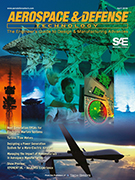Journal Article
3D-3D Self-Calibration of Sensors Using Point Cloud Data
2021-04-06
2021-01-0086
Recently, various calibration techniques proposed for extrinsic calibration for Autonomous Vehicles (AVs) mostly rely on the camera 2D images and depth map to calibrate the 3D LiDAR points. While most methods work with the whole frame, some methods use the objects in the frame to perform the calibration.






